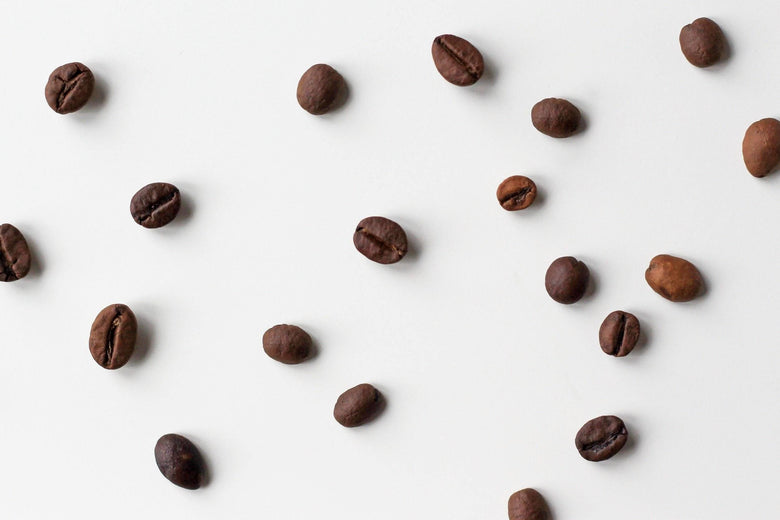SOE Single Origin Espresso – A Great Gift for Coffee Aficionados
SOE Single Origin Espresso – A Great Gift for Coffee Aficionados
Blog Article
Coffee Beans 101: Whatever You Need to Find Out About Espresso and Blended Coffee Beans
When it concerns coffee, comprehending the subtleties of coffee and blended beans can change your daily mug. You'll uncover the distinctive features of Arabica and Robusta beans, and how each influences flavor and high levels of caffeine web content. From the expanding process to toasting methods, every action plays a duty in your coffee experience. What makes the best mixture? Let's explore the crucial components that add to a remarkable mug of coffee.
Understanding Coffee Beans: Kinds and Ranges
When diving into the world of coffee, understanding the kinds and ranges of coffee beans is essential for every single enthusiast. You'll mostly encounter 2 main species: Arabica and Robusta. Arabica beans are known for their smooth, complex flavors and lower caffeine content, making them a preferred amongst coffee enthusiasts. On the other hand, Robusta beans pack a strike with a more powerful, much more bitter taste and greater high levels of caffeine levels, frequently utilized in coffee blends.
Ethiopian Yirgacheffe uses bright floral notes, while Colombian beans give a healthy taste profile. By familiarizing yourself with these beans and their tastes, you'll elevate your coffee experience and make even more informed choices in your developing trip.
The Growing Process: From Seed to Bean
When you discover the trip of coffee, all of it beginnings with seed choice techniques that establish the structure for top quality. From there, growing and harvesting play vital roles in making certain the beans flourish. Finally, handling methods change those collected cherries right into the coffee beans you love.
Seed Selection Techniques
Choosing the right seeds is crucial for producing high-quality coffee beans, as it lays the foundation for the entire growing procedure. You ought to begin by picking seeds from respectable sources that focus on quality and genetic variety. Try to find selections understood to flourish in your specific climate and dirt problems. Take note of the seed's age and storage problems, as fresh seeds tend to sprout much better. When feasible, go with organic seeds to lessen exposure to harmful chemicals. Consider the condition resistance of different ranges, as this can significantly affect your yield. Do not hesitate to consult with regional farmers or experts to get insights right into the finest seed choices for your region. This knowledge will improve your coffee-growing experience.
Farming and Harvesting
As you nurture your coffee seeds right into growing plants, comprehending the growing and harvesting procedure is essential for attaining the very best flavor and quality. Beginning by growing your seeds in well-draining dirt, ideally in a shaded area to secure them from direct sunlight. As your plants grow, keep regular moisture, and bear in mind their requirement for nutrients. Trim consistently to advertise airflow and healthy development.
When it comes time to harvest, look for ripe cherries, which normally turn a dynamic red. Hand-picking is commonly the very best technique to guarantee only the ripest cherries are chosen. Timing is necessary; harvesting as well early or far too late can affect the taste account of your beans. Accept persistence and care, as this is where high quality begins.

Handling Approaches Discussed
As soon as you have actually harvested your coffee cherries, the following important step is processing them to change those vivid fruits into the beans you'll make. There are 2 primary methods: the completely dry procedure and the damp procedure. In the dry procedure, you spread out the cherries out in the sunlight to dry, permitting the fruit to ferment and present one-of-a-kind flavors to the beans. On the various other hand, the damp process involves eliminating the fruit instantly and fermenting the beans in water, resulting in a cleaner taste. After handling, the beans are hulled, sorted, and generally dried once more. Each method influences the flavor profile, so trying out both can assist you discover your preferred brew. Understanding these methods is essential to appreciating your coffee experience.
Roasting Techniques: Just How Flavor Is Established
When it involves roasting coffee beans, recognizing roast degrees is vital to revealing their distinct flavors. Each toasting strategy influences the fragrance and boosts the flavor development process, providing you a richer coffee experience. Let's check out how these factors come together to raise your day-to-day brew.
Roast Levels Discussed
Roast degrees play a necessary function fit the flavor profile of your coffee. When you choose a light roast, you'll delight in intense acidity and fruity notes. As you move to a tool roast, you'll see a balance of sweetness and intricacy, typically highlighting chocolate or sugar tastes. Dark roasts, on the various other hand, deliver bold, smoky qualities with much less level of acidity, making them rich and durable. Each degree results from different roasting times and temperatures, affecting the beans' chemical composition. By comprehending these levels, you can better choose a coffee that matches your taste choices. Explore various roasts to discover which one reverberates with you, enhancing your general coffee experience Discover More Here and pleasure.
Effect On Aroma
The roast degree not just affects the taste of your coffee however additionally significantly impacts its scent. Each toasting technique releases different unpredictable substances, forming exactly how your coffee scents. Furthermore, the quality of the beans plays a vital duty; newly roasted coffee launches more aromatic oils, boosting that luring scent.
Flavor Development Process
As you explore the flavor development procedure, you'll discover that roasting techniques play an essential duty in shaping the taste account of your coffee. The roasting temperature level and time directly affect the level of acidity, sweetness, and anger of the beans. Light roasts retain even more of the bean's initial tastes, highlighting fruity and floral notes. Medium roasts equilibrium acidity and body, using an all-round taste. Dark roasts, on the other hand, draw out strong, smoky attributes while decreasing the bean's fundamental qualities. Throughout roasting, chain reactions, like the Maillard reaction and caramelization, transform the beans and boost their complexity. Trying out various roasting degrees can assist you locate your best mixture, so do not think twice to taste and uncover the rich range of flavors!
Coffee vs. Blended Coffee: Trick Differences
Coffee and mixed coffee each offer distinct experiences that satisfy various preferences and choices. Espresso is a focused coffee brewed forcibly hot water through finely-ground coffee beans, resulting in a rich, vibrant taste and a velvety layer of crema ahead. It's frequently enjoyed as a shot or utilized as a base for drinks like lattes and cappuccinos.
On the other hand, combined coffee combines numerous beans from various regions, creating a more balanced taste account. You'll often find blends that highlight body, sweet taste, or acidity, making them flexible for different brewing techniques. While espresso focuses on intensity, combined coffee may supply a wider range of tastes that can transform with each sip.
Eventually, your choice in between espresso and blended coffee come down to your personal choice. Whether you crave a leisurely mug or a fast shock, both choices have something scrumptious to provide.

Developing Methods: Opening the Perfect Cup
When it involves developing coffee, finding the right method can change your experience and raise your cup. Each developing technique has its distinct charm and can significantly impact your coffee's flavor and fragrance. As an example, utilizing a French press allows you to take pleasure in a abundant and robust brew, while a pour-over method gives a clean, intense mug with distinctive flavors.
If you prefer coffee, buying a quality maker can aid you grasp the art of pulling shots. For comfort, a single-serve sheath system offers rate without compromising preference.
Do not ignore cold mixture, which delivers a smooth, much less acidic coffee perfect for warm days. Explore various approaches to uncover what resonates with your taste buds. Each brewing method opens a new world of opportunities, so take the time to check out and discover your excellent cup. Delighted developing!
Tasting Notes: Identifying Flavor Profiles
Exactly how can you really value your coffee if you do not know what flavors to look for? Tasting notes are your guide to comprehending the complicated globe of coffee. Some coffees could leave a chocolatey or sugar aftertaste, while others may have an intense, clean coating.
Think about the body of the coffee, too; is it ventilated and light or thick and syrupy? Do not fail to remember acidity; a bright level of acidity can add vitality, while a low acidity may provide a smoother experience. By recognizing these taste profiles, you'll deepen your connection great post to read with each cup, making coffee sampling a fascinating trip of exploration.

Tips for Selecting and Keeping Coffee Beans
Picking and storing coffee beans properly can substantially improve your developing experience. Begin by selecting high-grade beans that match your preference - SOE.
When you have your beans, save them in a closed container to stop direct exposure to light, moisture, and air. A dark, amazing area functions best, so stay clear of keeping them in the fridge or fridge freezer, as this can introduce moisture. Only grind the quantity you need to preserve freshness; whole beans maintain taste longer than pre-ground coffee.
Lastly, try to utilize your beans within two to 4 weeks after opening up for peak preference. Following these tips will ensure your coffee remains flavorful and delightful, boosting your daily brew to new heights.
Frequently Asked Questions
For How Long Do Coffee Beans Keep Fresh After Toasting?
Coffee beans remain fresh for about two weeks after toasting - SOE. You ought to keep them in a closed container, away from light and moisture. After that, their flavor and scent begin to diminish substantially

Can I Mix Different Coffee Bean Varieties?
Definitely, you can blend different coffee bean ranges! Try out blends can boost flavors and develop an one-of-a-kind preference account. Just make sure to balance the strengths and attributes of each variety for the very best outcomes.
What Is the Ideal Work Size for Coffee?
For coffee, you'll want a great work dimension, concerning the appearance of table salt. This permits perfect removal, leading to a rich, delicious shot. go to the website Experiment a bit to find what matches your preference best!
Exactly How Does Altitude Affect Coffee Bean Flavor?
Altitude influences coffee bean taste by affecting the development rate and chemical structure. Greater elevations bring about slower growth, which improves acidity and complexity, offering your coffee a special and dynamic taste you will not fail to remember.
Exist Decaffeinated Versions of Coffee Beans?
Yes, there are decaffeinated variations of coffee beans. You can delight in an abundant coffee taste without the high levels of caffeine kick. Just try to find "decaf" blends at your neighborhood coffee bar or specialized store.
Coffee Beans 101: Everything You Need to Know About Coffee and Blended Coffee Beans.
When diving right into the globe of coffee, comprehending the kinds and ranges of coffee beans is important for every lover.When it comes to roasting coffee beans, comprehending roast degrees is key to exposing their unique tastes. Coffee is a focused coffee made by requiring warm water via finely-ground coffee beans, resulting in a rich, bold flavor and a velvety layer of crema on top.On the various other hand, combined coffee integrates different beans from various regions, producing a much more balanced taste profile.
Report this page